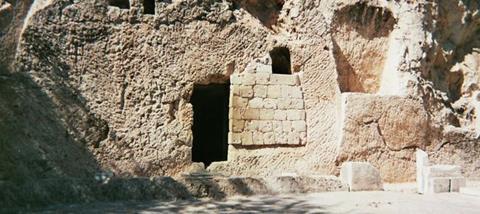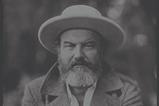A new argument is changing the way Christians are seeking to persuade sceptics of the truth of the resurrection. Justin Brierley presents the ‘minimal facts’.

At the start of the 20th century, English journalist Frank Morison began an investigative project to prove that the story of Christ’s resurrection was a myth. Famously, the book he eventually wrote, called Who Moved the Stone? (Faber & Faber 1930), told the story of how he instead became convinced that Jesus had risen from the dead.
Morison began with a set of assumptions that most people, 100 years later, continue to hold – that the story of the resurrection, recorded in all four Gospels, is based on superstitious fables that gave rise to a legendary fairy tale. Atheist biologist Richard Dawkins has written: ‘Accounts of Jesus’ resurrection and ascension are about as well-documented as Jack and the Beanstalk.’
But how closely have sceptics such as Dawkins actually investigated the historical facts surrounding the resurrection?
The ‘minimal’ facts
I believe that the case for the resurrection is even stronger today than in Frank Morison’s time. A new generation of biblical scholars have been examining afresh the evidence for the claim that lies at the centre of the Christian faith.
Leading the field is Gary Habermas, New Testament historian and philosopher of religion. He, along with others, has proposed a new way of making the argument – the ‘minimal facts’ approach.
No appeal to the inspiration of scriptures is required in this approach. There is no attempt to try to harmonise apparent contradictions between the different Gospel accounts. There are no arguments over what can and can’t be believed in the stories. The aim is far simpler: To show that the resurrection of Jesus is the most coherent and rational explanation for a set of historical facts which are agreed upon by the vast majority of New Testament historian scholars, whether believing or non-believing, Christian or agnostic. Habermas has described it as the ‘lowest common denominator’ version of the facts.
The claim is that for those with an open mind, the agreed upon ‘minimal facts’ should be enough to make the case for the resurrection. So, let’s review four of these facts and then ask the question: What is the best explanation for them?
FACT 1: Jesus died by crucifixion
Jesus’ death on the cross is almost undisputed. The Koran does claim that Jesus did not die on the cross, and many Muslims believe that a substitute for Christ actually died in his place. However, when it comes to serious scholarship, Jesus’ death on the cross is taken as read. Not only is the story found in all four Gospels, but contemporary writers such as the Jewish historian Josephus also record the event.
You can’t have a resurrection without a dead body to start with, so showing that those who deny the death of Jesus are going against the weight of historical evidence is an important first step.
As historian NT Wright says, ‘In the ancient world the word “crucifixion” was almost like a swear word, it was so horrible and barbaric. And yet Christians made the cross the symbol of their movement from the very beginning. Without the death of Jesus that cultural shift is impossible to explain.’
FACT 2: The empty tomb
Most people are unlikely to invent a story that reflects badly on themselves. I have one such story of spilling coffee all over a fellow commuter’s laptop on a train journey (an event etched in my memory forever).
Historians describe this phenomenon as the ‘criterion of embarrassment’. A recorded story is more likely to be true if it would have been embarrassing or inconvenient to those telling it. We are more likely to invent (or exaggerate) stories that make us look good.
For this reason, many point out that it would have been very odd for the early Church to make women the first witnesses of the empty tomb if the account had been an invention. In the patriarchal culture of first-century Israel, female testimony was worth far less than that of a man. If the Gospel writers had intended to pull the wool over their readers’ eyes, it would have made far more sense to place the male disciples as the first arrivals at the empty tomb, not Mary Magdalene and her companions.
Although the ‘minimal fact’ of the empty tomb is supported by a smaller majority of scholars compared to the other facts, we need to take it seriously. Despite the Gospels differing in their details, the discovery of the empty tomb by a group of Jesus’ female followers is central to all four accounts. The fact that women were the first at the scene acts as a piece of corroborating evidence for the historical authenticity of the story.
FACT 3: People reported seeing the risen Christ
That the followers of Jesus reported experiences of seeing the risen Christ is widely agreed across believing and non-believing scholarship. Non-Christian New Testament scholar Gerd Lüdemann writes: ‘It may be taken as historically certain that Peter and the disciples had experiences after Jesus’ death in which Jesus appeared to them as the risen Christ.’ These experiences were also enough to convince sceptics and persecutors such as James the brother of Jesus, and the apostle Paul.
Could these reported experiences have arisen by a legendary word-of-mouth fashion, in a historical version of ‘Chinese whispers’ (or the ‘telephone game’ as our American counterparts call it)?
Again the historical records don’t support that idea. In 1 Corinthians 15 Paul quotes a creed of the Church, affirming the resurrection and the witnesses to it. Paul wrote this letter in around AD 55, and was quoting from an already established tradition, which suggests the resurrection experiences were being reported from the very inception of the Christian Church. These were not half-remembered reports far removed from the events.
Whether historians believe that these really were experiences of the risen Christ is a question we will come to shortly. But that they do believe that Jesus’ followers claimed to have seen the risen Jesus is a well-established fact.
FACT 4: The explosive growth of the Christian Church
The Monty Python film The Life of Brian was not terribly well received by churches when it was released in 1979. But those who criticised it for parodying Christ through its eponymous hero Brian (‘He’s not the Messiah, he’s a very naughty boy!’) probably failed to notice that it was correct in at least one respect.
Figures with Messianic claims were not uncommon in first-century Judea. Other preachers drew their own followers. The only difference is that when their leaders were killed by the Romans they either went home or found themselves a new Messiah. What they did not do was immediately begin to proclaim that their Messiah had risen from the dead.
For starters, it would have been a very un-Jewish thing to say. Jews believed in the general resurrection from the dead at the end of time. There was no expectation of individuals, much less the Messiah, being raised from death before then. Yet this is what Jesus’ followers started proclaiming. Again, it would have been a strange thing to make up.
In the process, a group of dejected, defeated and crushed disciples who had lost their leader to a brutal, humiliating death at the hands of the Roman overlords suddenly became a group of bold, extraordinarily confident people willing to be rejected by their Jewish culture, and experience beating, persecution and death for their beliefs.
And the Church grew phenomenally – another well-established fact across the spectrum of New Testament research. What transformative event explains all this? There seems to be a resurrection-shaped hole at the centre of the early Church’s growth.
Finding the theory that fits
These are not the only ‘minimal facts’. Different scholars use slightly different versions. But the question remains the same: What best explains this set of data?
Many naturalistic explanations of individual facts have been offered: Perhaps the disciples stole the body, leaving an empty tomb. Some historians proffer a hallucination hypothesis to explain the disciples’ experiences.
Yet, when run through the cumulative filter of all the minimal facts, none of the naturalistic theories seem to fit. Why would the disciples suffer for a lie if they had robbed the tomb? Why would hallucinations of a risen Messiah occur among Jews with no theological expectation of such an event?
Often there is something else informing the way that certain historians are willing to interpret these facts. Historical enquiry excludes supernatural explanation by definition, they say. In that case, a naturalistic explanation will always supersede a supernatural one.
This view seems to depend upon a presupposition that a God who intervenes in human history does not exist. However, if we already have good grounds for believing in God, shouldn’t we be prepared to consider a supernatural explanation?
What if the explanation given by the first followers of Jesus was true? The evidence all fits. It transformed them and, if it is true, it should change everything for us too.
Read more in Justin Brierley's book Unbelievable? Why, after ten years of talking with atheists, I'm still a Christian




































